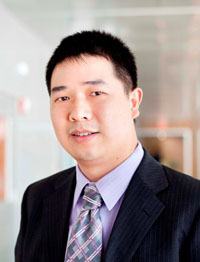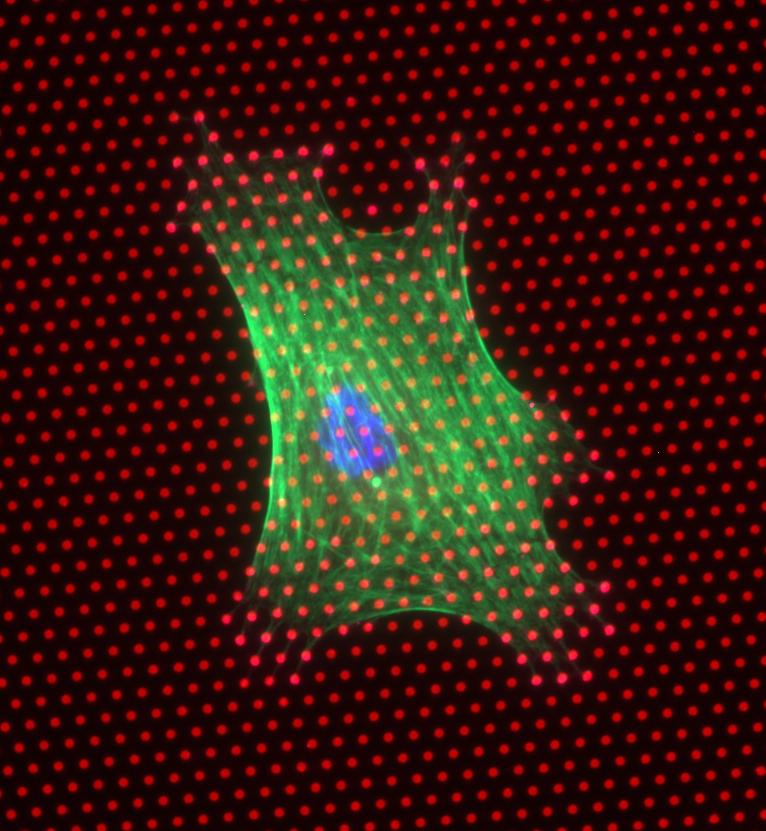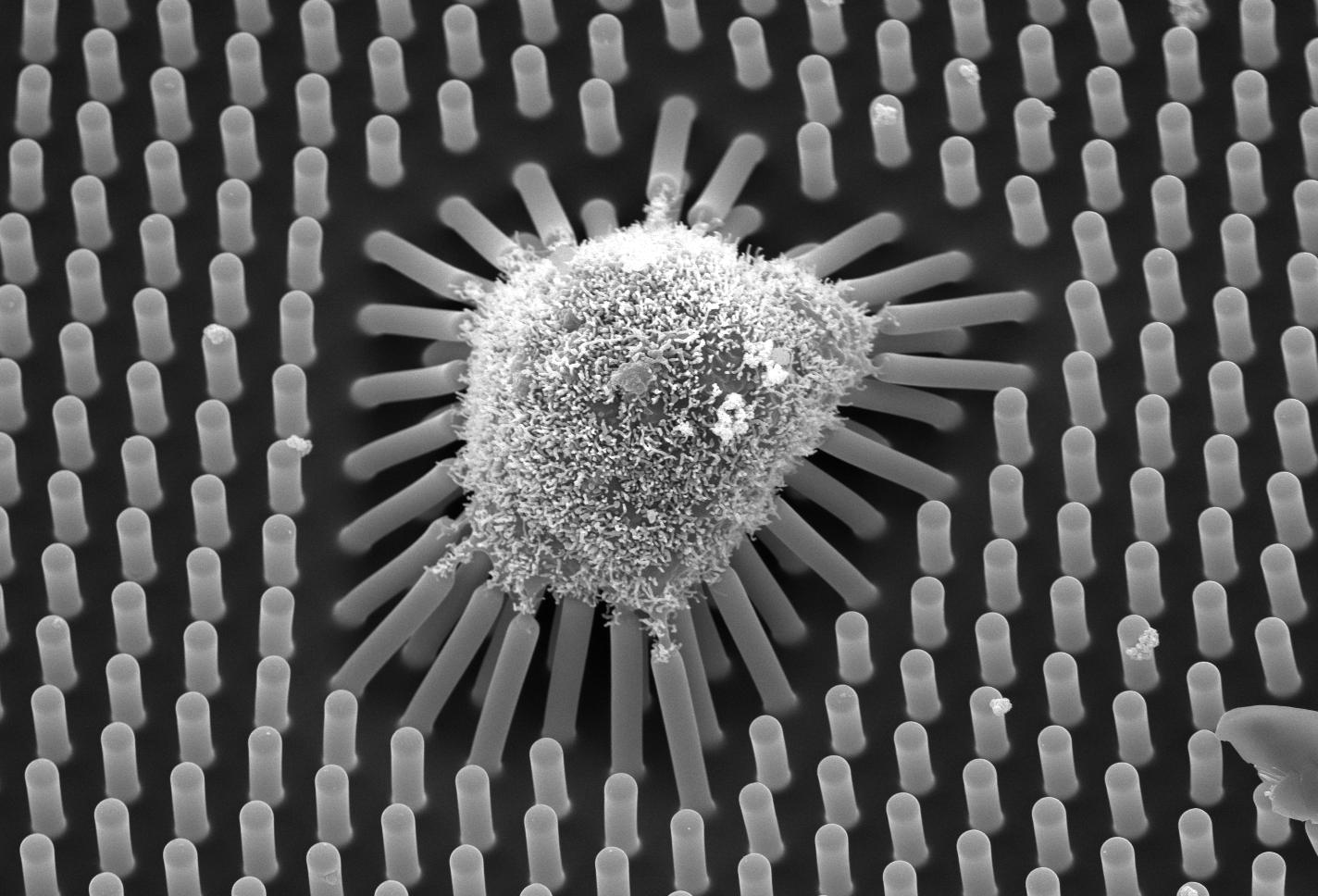
An article by ME Assistant Professor Jianping Fu was published in the August issue of Nature Methods. The article presents the findings of Fu’s research on how manipulation of the mechanical properties of the stem cell microenvironment can direct their differentiation.
As the article describes, Fu has experimented with synthetic micromolded elastomeric structures to mimic the in vivo stem cell microenvironment, which he refers to as ex vivo “stem cell niche.” “In the past people have used synthetic or natural hydrogels to mimic the stem cell environment,” explained Fu. Certain characteristics of the stem cell niche, such as the mechanical stiffness, can affect stem cell function. When placed on top of the hydrogels, stem cells sense the mechanical rigidity of the gel substrates and will differentiate into different cell types. “But there are some intrinsic problems with this approach,” he continued. “Gels are three-dimensional porous structures. So when you change the mechanical properties of the gels you’re also changing the gel surface properties, such as surface porosity and surface chemistry. These effects can independently affect stem cell function.”

To overcome this problem, Fu proposes a simple solution. His research uses micromolded elastomeric micropost arrays with fixed diameters to regulate the stem cell microenvironment. By varying only the height of the microposts, the rigidity of the post structure can be manipulated without changing other properties. For example, a taller micropost will bend more easily than a shorter, stump-like micropost though both microposts retain identical surface properties. As in the experiments with hydrogels, stem cells placed on top of the microposts will sense the degree of rigidity of the substrates and will differentiate according to these mechanical cues. Fu’s research applies this method to mesenchymal stem cells, found in the body’s bone marrow. When mesenchymal stem cells are placed on rigid micropost arrays they differentiate into bone cells while the same stem cells placed on tall microposts become fat cells. His research is thus relevant to the study of bone regeneration and could have direct implications in treating diseases like osteoporosis.
Fu’s research has also shown that stem cell differentiation can be predicted very early on based on the traction force that a stem cell exerts on the microposts. Stem cell differentiation normally is a lengthy process, taking anywhere from two to six weeks to complete, which has been a problem for stem cell biologists who want to speed up their stem cell studies. Fu proposes using fluorescent microscopy to measure the bending of the microposts; from this measurement the traction force can be quantified.

“Our study shows that if the stem cells determine to differentiate into one cell type then their traction forces can be much greater than the ones who will not differentiate, or who differentiate into another cell type,” said Fu. “Interestingly this observation can happen very early, even within the first day of their differentiation process.” The ability to predict early on what type of cell a stem cell will become has many applications for drug screening and could be very valuable to pharmaceutical companies.
Fu’s research group, Integrated Biosystems and Biomechanics Lab, focuses on using micro/nanostructures to investigate biologically relevant questions pertinent to the field of mechanobiology. “There are many interesting questions unanswered in the field of mechanobiology, and we as engineers can provide some unique tools to help study these questions,” said Fu of this field. Besides working with stem cell differentiation, Fu and his group also study cell chip interface and the use of nanofluidic devices for ultrasensitive biosensing and detection.
The study reported in this Nature Methods article was performed in Dr. Christopher Chen’s group at the University of Pennsylvania, and was supported by the National Institutes of Health and the American Heart Association.
